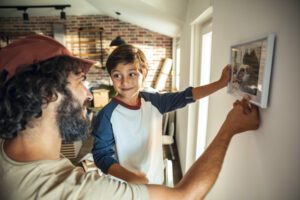
Stable home prices, mixed rental development
Prices for owner-occupied homes changed only marginally in March. Asking rents varied greatly from canton to canton. While rents in higher-demand regions continued to increase,

Prices for owner-occupied homes changed only marginally in March. Asking rents varied greatly from canton to canton. While rents in higher-demand regions continued to increase,

Mixed news for tenants at the start of 2024: Rental flat offers developed differently in the individual regions in January. However, overall, the national average

Hardly any changes for condominiums, slightly higher prices for single-family homes: The current analysis of sales advertisements on ImmoScout24 shows that the market settled at

Is the dream of home ownership becoming affordable again? Potentially, yes, as asking prices for detached homes fell in July. However, anyone looking to buy

The prices of homes offered for sale continued to rise in March. This is despite the fact that the number of properties available for purchase

Landlords of residential properties increased their asking prices in February, which has already compensated for the decline observed in the previous month. On the other

Both rental flats and homes for sale were offered at lower values in January, as an analysis of the latest listings on ImmoScout24 shows. Is